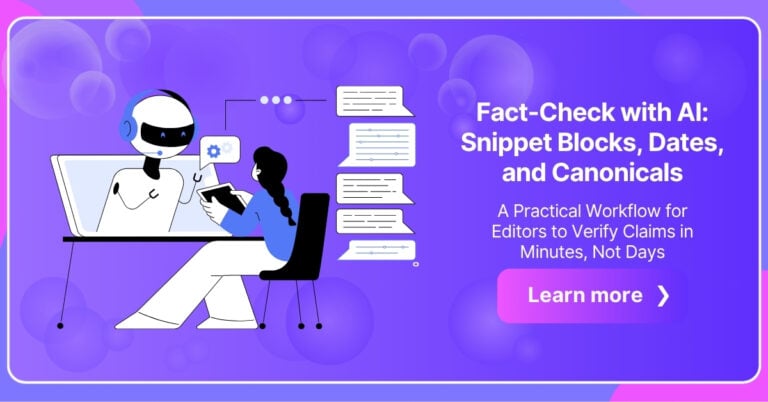Generative AI creates text, images, audio, and video by learning patterns in data. Most systems either predict the next token with transformers (embeddings + self-attention) or denoise noise with diffusion models.
Others include GANs and VAEs. After training, prompts guide step-by-step generation; retrieval can improve factuality.
TL;DR
- Generative AI learns from large datasets and predicts the next element in text, image, audio, or video sequences.
- Main families: Transformers, Diffusion, GANs, VAEs, plus RAG (retrieval-augmented generation).
- Core steps: data → training objective → inference (generation) → evaluation → deployment.
- Common stacks: Python, PyTorch, TensorFlow, JAX.
- Use cases: content, design, code, education, support, healthcare research (synthetic data).

What Is Generative AI and How Does It Work?
Generative AI learns statistical patterns in large datasets and then samples from what it has learned to produce new outputs. In language, a model predicts the next token; in images, a model often denoises random noise into a coherent picture. Prompts (and sometimes retrieved documents) steer the result.
Here’s the basic flow:
- Data: The AI is trained on massive collections of text, images, or other media.
- Training Objective: The model learns to predict the next word, pixel, or note in a sequence based on context.
- Inference: After training, the model can generate new outputs when prompted.
- Feedback and Iteration: Models improve over time with user feedback and updated data.
What Algorithm Does Generative AI Use?
Generative AI uses different algorithms depending on the media and purpose.
- Transformers: Power large language models like GPT and BERT, excelling at understanding and producing natural language.
- Diffusion Models: Start with random noise and iteratively refine it into realistic images, audio, or video (e.g., Stable Diffusion, DALL·E).
- GANs (Generative Adversarial Networks): Use a generator to create data and a discriminator to judge it, producing highly realistic images or videos.
- VAEs (Variational Autoencoders): Encode input data and then decode it to generate variations.
- Retrieval-Augmented Generation (RAG): RAG combines generation with search, retrieving relevant information before producing a response for improved accuracy.
| Model family | Core idea / objective | Shines at | Strengths | Watch-outs | Well-known examples |
|---|---|---|---|---|---|
| Transformer | Predict next token with self-attention over embeddings | Text, code, some audio/video | Long-range context, versatile | Hallucinations; compute-heavy | GPT-style LLMs, Llama, Gemini-style models |
| Diffusion | Start from noise; iteratively denoise toward data | Photoreal images, video, audio | High fidelity, stable training | Many steps → slower | Stable Diffusion, DALL·E-style models |
| GAN | Generator vs Discriminator adversarial game | Crisp images, style transfer | Sharp samples, fast at inference | Training instability, mode collapse | StyleGAN |
| VAE | Encode→latent→decode; optimize ELBO | Fast generation, anomaly/synth data | Interpretable latents | Softer/blurrier outputs | VQ-VAE families |
How Is Generative AI Programmed?
Building a generative AI model follows a high-level pipeline:
- Data Preparation: Gathering and cleaning large datasets.
- Model Selection: Choosing an architecture such as a transformer or diffusion model.
- Training and Fine-Tuning: Using powerful computing resources to teach the model patterns in the data, then adapting it for specific tasks.
- Evaluation: Measuring accuracy, bias, and safety.
- Deployment: Making the AI available through apps, APIs, or embedded systems.
What Coding Language Is Used for Generative AI?
Python is the most widely used programming language for generative AI, thanks to its robust libraries and frameworks.
Common stacks include:
- PyTorch: Flexible and popular for research and deployment.
- TensorFlow: Known for scalability and production readiness.
- JAX: Optimized for high-performance numerical computing.
For non-programmers, many platforms — including CustomGPT.ai — offer no-code or low-code tools that let you train and deploy generative AI without having to write extensive code.
How Does Generative AI Detection Work?
Detection methods aim to determine whether content was AI-generated. Common approaches include:
- Classifiers: AI models trained to identify telltale signs of machine-generated content.
- Watermarking: Embedding hidden markers in AI outputs for later verification.
- Metadata and Signatures: Attaching creation details to files.
- Stylometry: Analyzing writing style patterns.
Detection is not perfect because AI-generated content can be highly convincing and models evolve quickly, making it challenging to identify with certainty.
How to Start with Generative AI?
If you are new to generative AI:
- Begin with a no-code platform like CustomGPT.ai or pre-built API.
- Experiment with different prompts to understand how the AI responds.
- Learn the basics of prompt engineering to improve results.
- As you grow more confident, explore fine-tuning models for specific use cases.
How Can Generative AI Be Used?
Generative AI is versatile, with applications across industries:
- Content Creation: Articles, social media posts, scripts.
- Design and Art: Concept sketches, digital artwork, logos.
- Software Development: Code generation, debugging help.
- Education: Personalized learning materials, tutoring.
- Customer Service: AI-powered chatbots that understand complex queries.
- Healthcare: Synthetic data generation for research.
Pro Tip
If you want generative AI to produce accurate, brand-aligned answers, train it on your own internal documents and knowledge base. This keeps responses relevant and avoids generic or outdated information.
Quick FAQs
How to start with generative AI?
You can start with pre-trained models or no-code platforms that require little technical skill. Begin by defining your goal, gathering relevant data, and experimenting with prompts. Over time, refine the AI’s knowledge base to match your brand voice and accuracy needs.
How are consumers using generative AI?
Everyday users rely on generative AI for writing emails, creating social media content, generating artwork, summarizing documents, and learning new topics. It’s also popular for brainstorming ideas, translating text, and automating repetitive tasks.
What is generative AI and how does it work?
Generative AI is a type of artificial intelligence that can create original content by predicting what should come next in a sequence. It works by training on large datasets, identifying patterns, and using algorithms like transformers or diffusion models to generate realistic outputs.
Is generative AI safe for business data?
Generative AI can be safe if deployed in secure environments where data remains private. Platforms like CustomGPT.ai allow companies to train models on their own documents without sharing information publicly, making it suitable for sensitive industries such as healthcare, law, and finance.
Conclusion
Generative AI has transformed how we create, design, and communicate. By learning from vast datasets and applying advanced algorithms, it can produce content across many formats with speed and accuracy.
While it brings powerful opportunities, it also requires responsible use and awareness of its limitations.
Call to Action
Curious what this looks like with your data? Try a RAG-powered assistant – fast setup, zero coding, fully secure.
Launch Your Own Generative AI Without the Tech Headache
Train a private AI assistant on your data — fast setup, zero coding, fully secure.
Trusted by thousands of organizations worldwide









